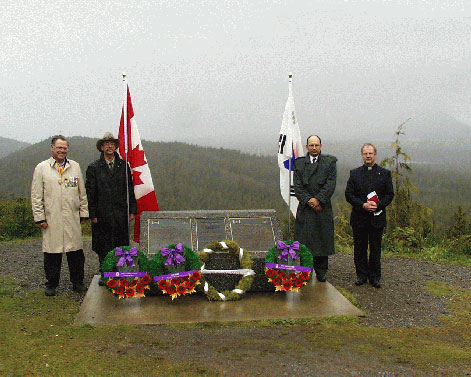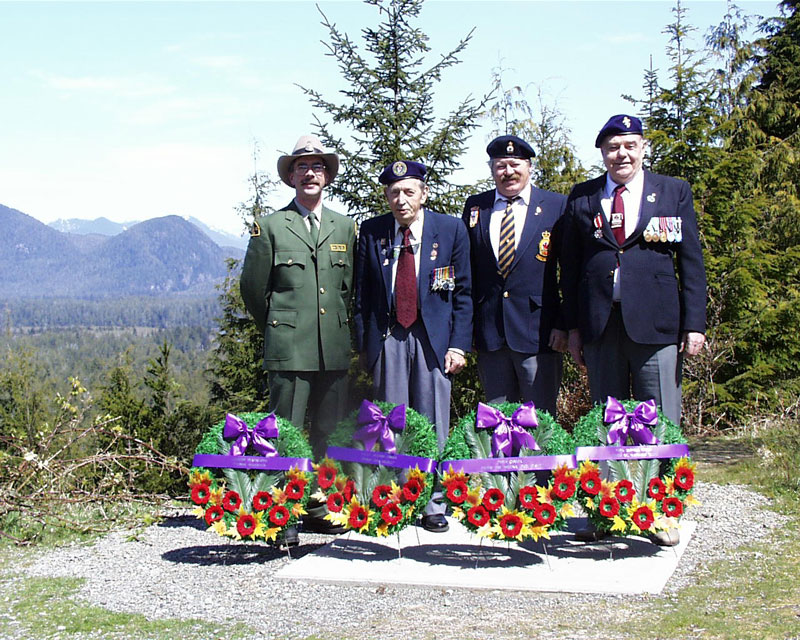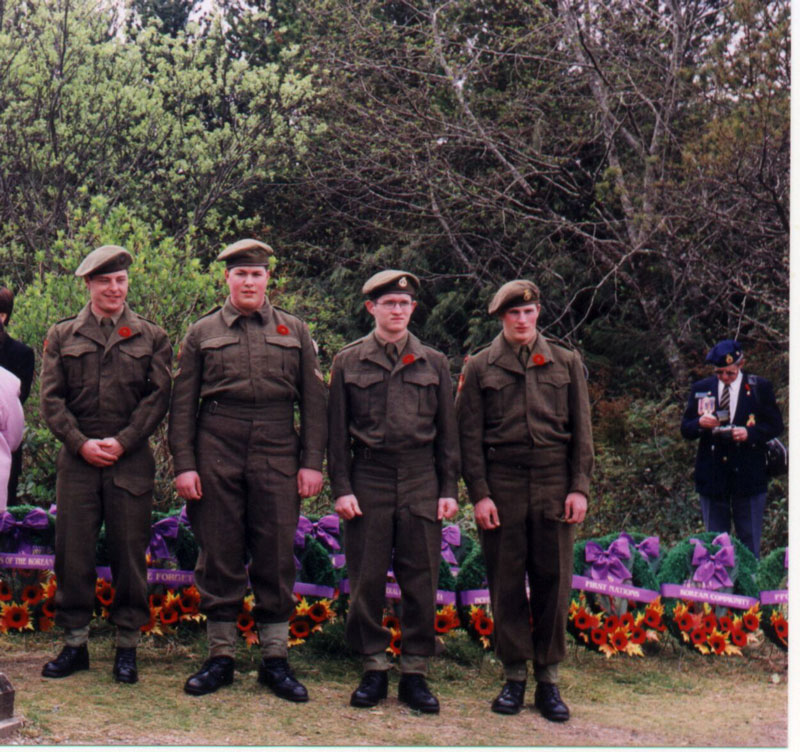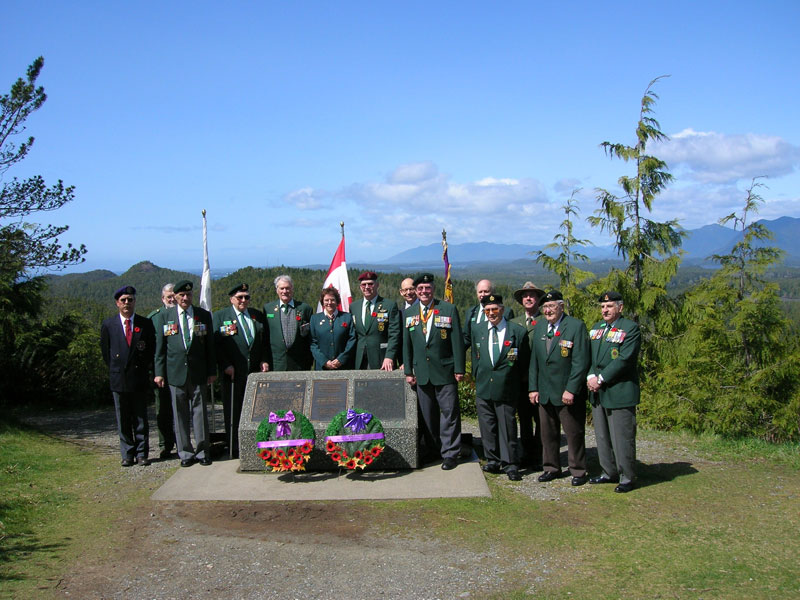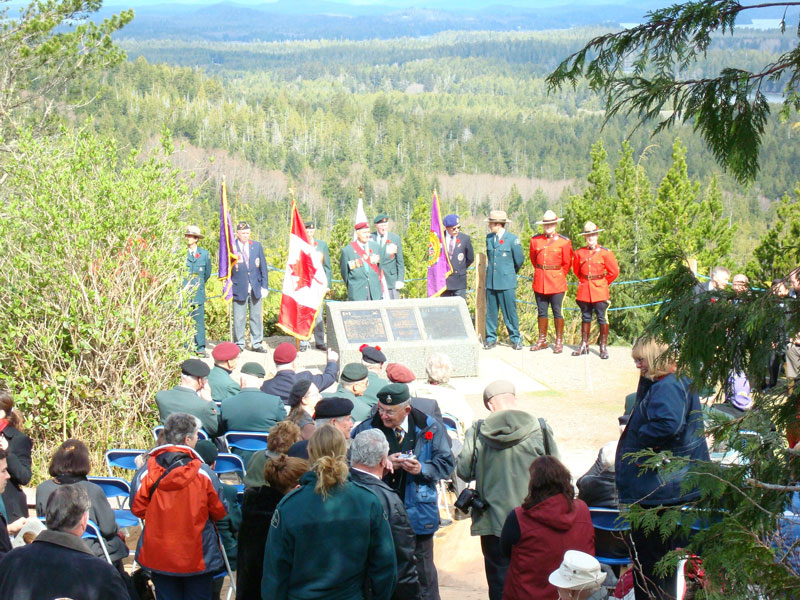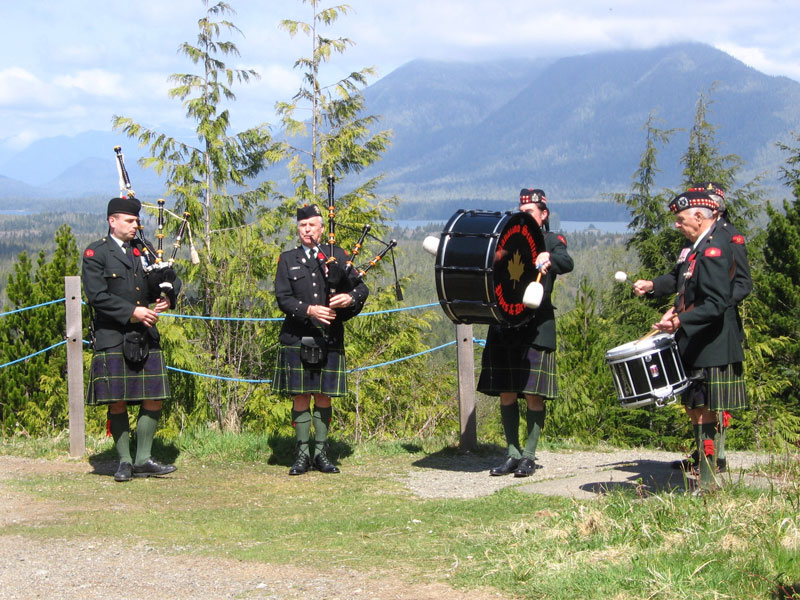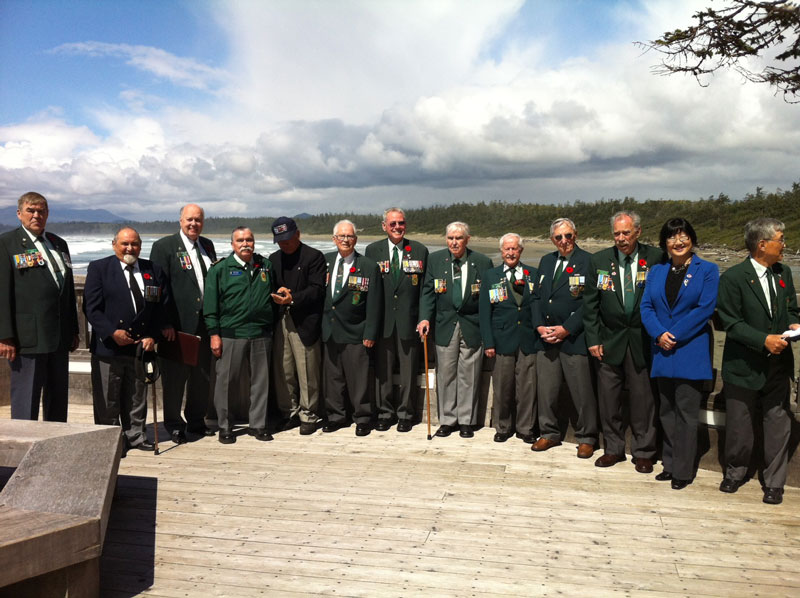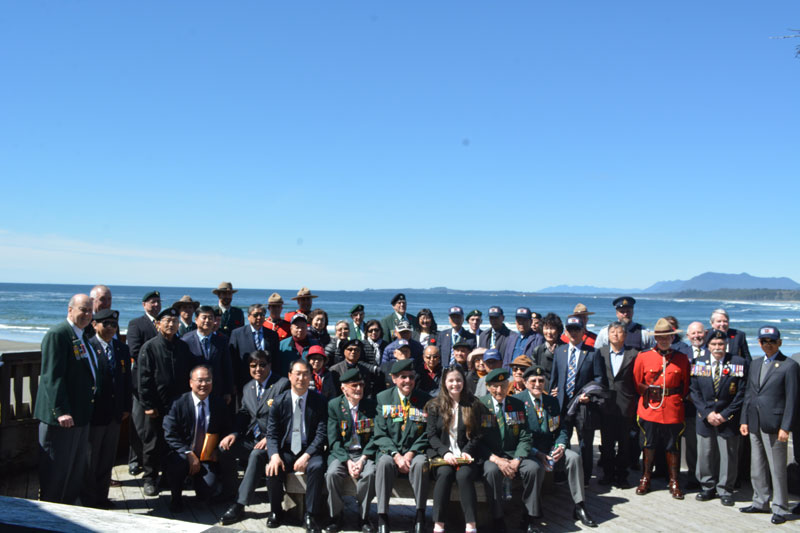
Kapyong Memorial at Radar Hill
Pacific Rim National Park Reserve
Korean War
Between 1950 and 1953 more than 26,000 Canadians served in the Korean War. These Canadians stepped forward to protect the values and freedoms we hold dearest. All those who served, including the 516 Canadians who never came home, will not be forgotten.
Princess Patricia’s Canadian Light Infantry
Members of the 2nd Battalion of Princess Patricia’s Canadian Light Infantry (2 PPCLI) were the first Canadian soldiers to set sail across the Pacific in November of 1950. They joined the action in mid-February of 1951 under the command of the 27th British Commonwealth Infantry Brigade.Battle of Kapyong
Some of the heaviest fighting our soldiers experienced in the war took place during the Battle of Kapyong in April 1951. The battle was a turning point in the Korean War and the soldiers of the 2nd Battalion of Princess Patricia’s Canadian Light Infantry helped prevent a potentially costly defeat for the South Korean and United Nations forces.
The nighttime battle required unimaginable bravery. It cost 10 Canadians their lives and left another 23 wounded. The heroic efforts of these soldiers and the Battalion as a whole did not go unnoticed. The 2nd Battalion of Princess Patricia’s Canadian Light Infantry was awarded the United States Presidential Unit Citation – a very rare honour for a Canadian unit.
(from Korea Veterans Association)
The Battle of Kapyong (22–25 April 1951), also known as the Battle of Jiaping was fought during the Korean War between United Nations (UN) forces—primarily Australian, Canadian and New Zealand—and the Chinese Communist People’s Volunteer Army. The fighting occurred during the Chinese Spring Offensive and saw the 27th British Commonwealth Brigade establish blocking positions in the Kapyong Valley, on a key route south to the capital, Seoul. The two forward battalions—3rd Battalion, Royal Australian Regiment (3 RAR) and 2nd Battalion, Princess Patricia’s Canadian Light Infantry (2 PPCLI)—supported by a New Zealand artillery battery, occupied positions astride the valley and hastily developed defenses. As thousands of South Korean soldiers began to withdraw through the valley, the Chinese infiltrated the brigade position under the cover of darkness and assaulted the Australians on Hill 504 during the evening and into the following day. Although heavily outnumbered, the 27th Brigade held their positions into the afternoon before the Australians were finally withdrawn to positions in the rear of the brigade, with both sides having suffered heavy casualties. The Chinese then turned their attention to the Canadians on Hill 677, but during a fierce night battle they were unable to dislodge them. The fighting helped blunt the Chinese offensive and the actions of the Australians and Canadians at Kapyong were important in assisting to prevent a breakthrough on the United Nations Command central front, and ultimately the capture of Seoul. The two battalions bore the brunt of the assault and stopped an entire Chinese division during the hard fought defensive battle. The next day the Chinese withdrew back up the valley, in order to regroup. Today, the battle is regarded as one of the most famous actions fought by the Australian and Canadian armies in Korea.
Radar Hill
In 1998, in recognition of the efforts and sacrifices made by the veterans and their families, a cairn was placed on Radar Hill in Pacific Rim National Park Reserve and the traditional territory of the Tla-o-qui-aht First Nations, dedicated to the battle of Kapyong and its importance as a turning point in the Korean War. At the same time, to reinforce our enduring bond with South Korea, Pacific Rim National Park Reserve was proudly twinned with Hallyo Haesang Sea National Park in Korea.
Canada Remembers
Every year in April, Pacific Rim National Park Reserve is honoured to host the Korea Veterans Association’s ceremony to commemorate the anniversary of the Battle of Kapyong. When this ceremony was first held in 1998, it carried deep significance as it was the first time that the Canadian Korea Veterans were able to wear on Canadian soil the medals awarded during the Korean War. This ceremony continues to carry great significance – reminding each of us of the bravery, strength and sacrifices made by the young men and women who risked so much to serve their country.
Lest We Forget
Related links
- ʔapsčiik t̓ašii (Multi-use pathway)
- 150 adventures for your bucket list
- Long Beach Unit
- West Coast Trail Unit
- Birding
- Boating
- Camping
- Cycling, mountain biking, and e-biking
- First Nations cultural experiences
- Fishing
- Geocaching
- Hiking
- Hiking: West Coast Trail
- Kwisitis Visitor Centre
- Red Chairs
- School and group programs
- Storm watching
- Surfing
- Volunteer opportunities
- Licensed operators
- Date modified :
